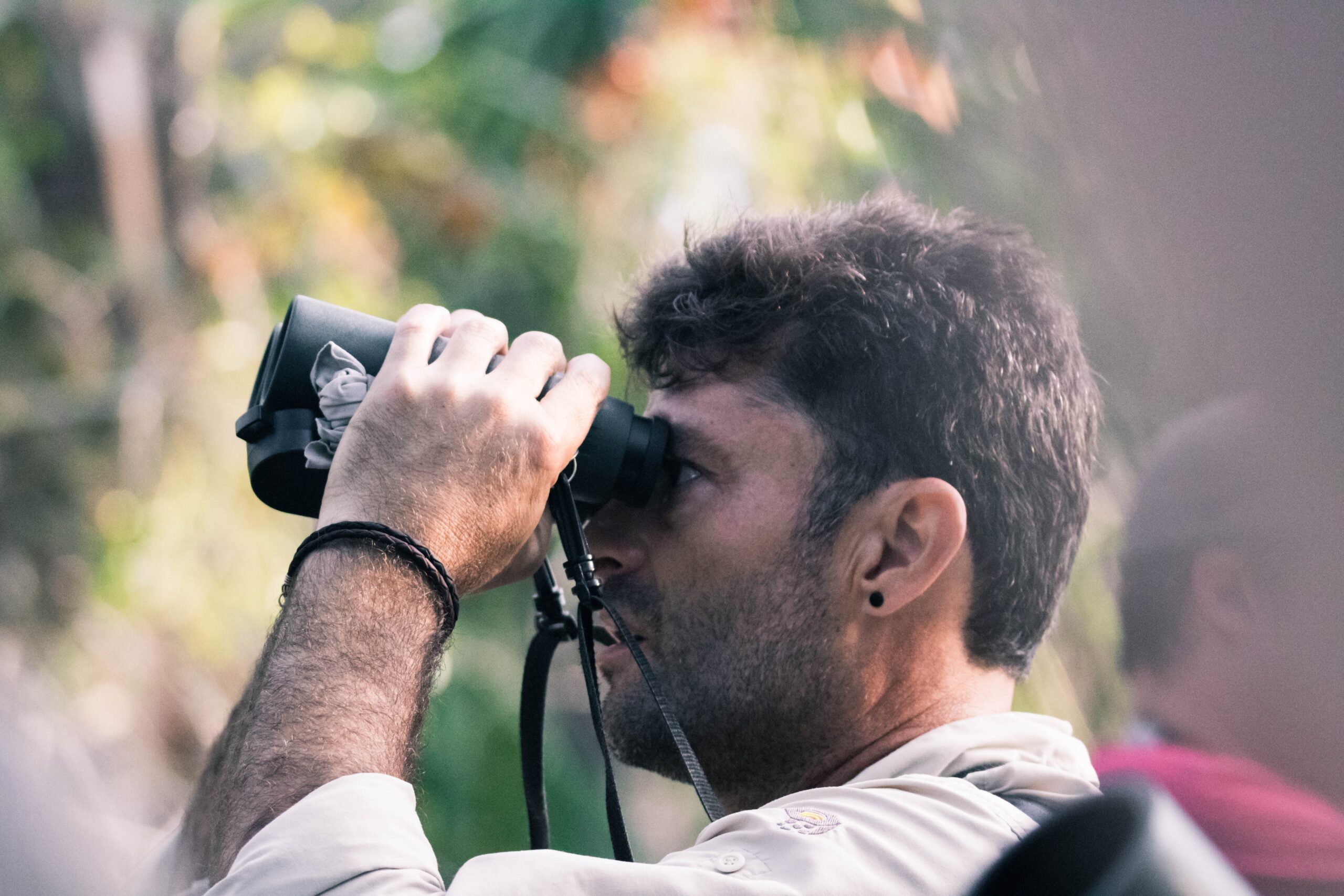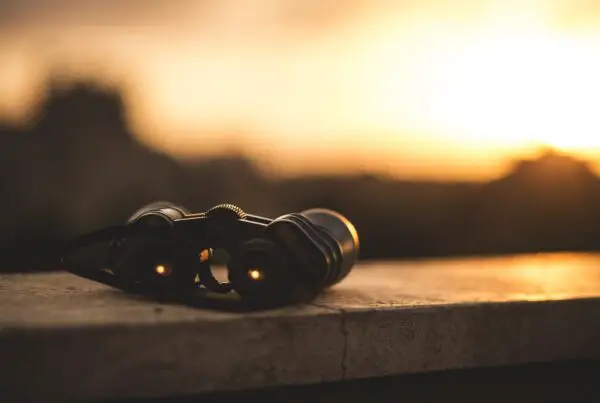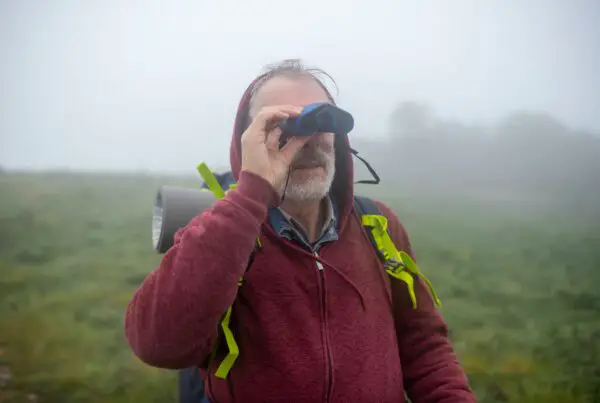Contents
Hunting is a sport that demands precision, patience, and a keen eye. To maximize your hunting success and comfort, choosing the right weight and size for your binoculars is essential.
The right weight and size for hunting binoculars depends on several factors, including your hunting style, personal preferences, and the specific conditions in which you’ll be using them.
Consider your hunting style: lightweight and compact binoculars are ideal for active hunters who cover a lot of ground, while larger binoculars with superior optics are suitable for stationary or stand hunters.
Striking a balance between optical quality and weight is key. Factor in your budget, and remember to try out binoculars for comfort before purchasing. Ultimately, your choice should align with your specific hunting needs, ensuring you can spot game effectively without unnecessary strain.
Factors to Consider When Choosing Binoculars
Hunting Style
Hunting styles can vary significantly, and the right binoculars for you depend on your approach. Here are a few common hunting styles and how they influence binocular preferences:
Spot-and-Stalk:
If you’re a spot-and-stalk hunter who covers extensive ground on foot, you’ll want lightweight binoculars that won’t weigh you down during long treks.
Stand Hunting:
For hunters who prefer to remain stationary, such as those in tree stands or blinds, the weight of your binoculars may be less of a concern. In this case, you can prioritize optical performance over weight.

Magnification and Objective Lens Size
Two critical specifications to understand when selecting binoculars are magnification and objective lens size:
Magnification:
Magnification determines how close the subject appears. Higher magnification binoculars (e.g., 10x) tend to be larger and heavier than lower magnification ones (e.g., 8x). Consider the terrain and distances you’ll be hunting in, as higher magnification is useful for open spaces but can be less stable in thick woods.
Objective Lens Size:
The objective lens size, typically denoted by the second number in binocular specifications (e.g., 10×42), affects both size and weight. Larger objective lenses let in more light, which can be beneficial in low-light conditions, but can also make binoculars bulkier and heavier.
Portability
Portability is a critical factor for hunters who cover a lot of ground. If you plan to carry your binoculars on your person for extended periods, consider compact and lightweight options.
Compact binoculars are easier to carry around your neck or in a pocket, allowing you to move freely without excess weight.
Balancing Optical Quality with Weight
The trade-off between optical quality and weight is a common concern among hunters. High-quality optics often come with advanced lens coatings, larger objective lenses, and specialized glass.
While these features can increase weight, they significantly improve image clarity, brightness, and low-light performance. The key is to find the right balance that suits your hunting needs and comfort level.
Budget Considerations
Budget plays a significant role in choosing the right binoculars. High-end binoculars with superior optics can be heavier and more expensive.
However, there are often budget-friendly options that offer a good compromise between performance and cost. Consider your budget and how important optical quality is for your specific hunting needs.
When it comes to choosing to hunt binoculars, budget is an important consideration. Based on the search results, there are several budget ranges to choose from. Here are some of the options:
- Best Hunting Binoculars Under $200: This range includes binoculars like the Vortex Diamondback Binoculars, Nikon Prostaff P7 Binoculars, and Bushnell Legend Ultra HD Binoculars.
- Best Binoculars Under $500: This range includes binoculars like the Nikon Monarch 5 10×42 Binocular, Maven C.1 8×42, and Vortex Viper HD 10×42 Binocular.
- Best Binoculars Under $600: This range includes binoculars like the Nikon Monarch 7 10×42, Zeiss Terra ED 524206, and Canon 10×30 Image Stabilization II.
- $1000 Binoculars: This range includes binoculars like the Zeiss Conquest HD, Meostars, Nikon HG’s, Leica Trinovids, and Razors.
Here are our Reviewed Best Binoculars Under Different Ranges
Advanced Features and Their Impact
Some binoculars come equipped with advanced features like image stabilization, rangefinders, or digital recording capabilities.
While these features can be incredibly useful, they can also add weight and bulk to your binoculars. Evaluate whether these features align with your hunting style and if they are worth the extra weight.
Practical Tips for Choosing Binoculars
Try Before You Buy
Whenever possible, try out different binoculars in-store or borrow from friends to get a feel for their weight and size. What feels comfortable to one person may not be the same for another, so finding a pair that suits your grip and eye spacing is essential for prolonged use.
Binocular Accessories
To distribute the weight more comfortably, consider using a binocular harness, strap, or chest pack. These accessories not only make carrying binoculars more ergonomic, but also provide quick and easy access when you need them in the field.
Binoculars Matter in Hunting: Reason
Hunting demands precision, and your binoculars are your precision instruments. They enable you to spot game from a distance, assess your surroundings, and make informed decisions. Binoculars are your trusted companions in the wild, and selecting the right ones can make the difference between a triumphant hunt and a fruitless venture.
Frequently Asked Questions (FAQs)
What is the importance of choosing the right weight and size for hunting binoculars?
Choosing the right weight and size for hunting binoculars is crucial because it directly affects your comfort and performance during hunting trips. The wrong binoculars can be heavy and cumbersome, making it challenging to carry them over long distances and impeding your ability to spot and track game effectively.
Are compact binoculars a good choice for hunting?
Compact binoculars can be an excellent choice for hunting, especially if you need to cover a lot of ground or want a lightweight option. They are easy to carry and can be worn around your neck or stored in a pocket. However, ensure they still provide adequate optical quality for your specific needs.
How does my hunting style influence the choice of binocular weight and size?
Your hunting style plays a significant role in determining the ideal binocular weight and size. If you’re a spot-and-stalk hunter who covers a lot of ground on foot, lightweight and compact binoculars are essential for mobility. However, if you prefer stand hunting or staying in one location, you can prioritize optical performance over weight since you won’t be carrying them as much.
How can I balance optical quality with the weight of binoculars?
Balancing optical quality with weight requires finding a binocular model that offers the level of clarity and brightness you need while keeping the weight manageable. Look for binoculars with advanced lens coatings, high-quality glass, and well-designed optics to ensure good performance without excessive weight.
What size binoculars are best for hunting?
The best size binoculars for hunting typically range from 8×42 to 10×42. These offer a good balance of magnification and light-gathering ability. Compact 8×32 or 10×32 binoculars are also suitable for those who prioritize portability, while larger 12×50 or 15×56 binoculars are better for long-range hunting in open areas. The choice depends on your hunting style and preferences.
Conclusion
Selecting the right weight and size for your hunting binoculars is a decision that should not be taken lightly. It’s a delicate balance between portability, optical performance, and durability.
Consider your hunting style, budget, and specific needs when making your choice. Whether you opt for lightweight binoculars for long treks or heavier ones with advanced optics, your decision should ultimately enhance your hunting experience.

A Binoculars enthusiast, who love exploring skies and watching birds. It is my hobby to collect Binoculars of different kinds and try to explore the world through various lenses. This is all I do to explore happiness by magnifying my beautiful world.




